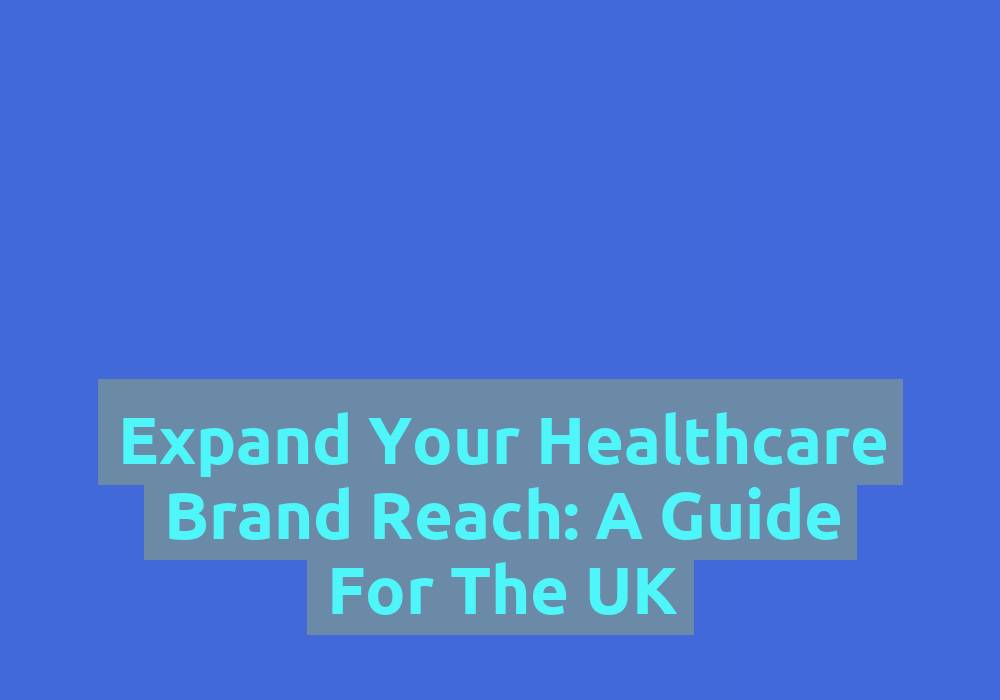FDA Regulations for Healthcare Products: An Essential Overview

Comprehensive Overview of FDA Regulations in Healthcare
Grasping the intricacies of FDA regulations for healthcare products is essential for professionals operating within the life sciences domain. These regulations are meticulously crafted to guarantee that healthcare products adhere to rigorous standards of safety, efficacy, and security prior to their release to consumers. The Food and Drug Administration (FDA) in the United States plays a pivotal role in enforcing these standards, influencing a diverse range of stakeholders, including manufacturers, healthcare practitioners, and patients.
Ensuring compliance with these regulations transcends mere legal obligation; it is vital for securing market access and safeguarding consumer health. For manufacturers, proving strict adherence to FDA guidelines is often the decisive factor in obtaining the essential licenses required for product marketing. For consumers, this compliance offers reassurance that the products they utilise have undergone extensive testing and meet stringent safety standards. In an environment where public health is of utmost importance, a thorough understanding of these regulations can greatly influence the success of innovations in healthcare.
The breadth of FDA regulations is extensive, covering a variety of healthcare products, including pharmaceuticals, medical devices, and biologics. Each category is governed by its own unique set of specific requirements and standards, necessitating a comprehensive understanding from both manufacturers and stakeholders. This multifaceted approach ensures that every product, whether it is a class I device like bandages or class III devices such as pacemakers, is thoroughly evaluated for its associated risks and efficacy.
The evolution of FDA regulations has a rich history marked by adaptability and growth. Founded in 1906 with the introduction of the Pure Food and Drugs Act, the FDA has experienced significant transformations to keep pace with new scientific discoveries and changing public health demands. Over the years, landmark legislation such as the Food, Drug, and Cosmetic Act of 1938 has been enacted, granting the FDA comprehensive authority. The regulatory framework continues to evolve in response to emerging technologies, underscoring the necessity for ongoing education and adaptability among healthcare practitioners and manufacturers.
Enforcement of FDA regulations is a rigorous process that encompasses inspections, product recalls, and legal actions. The FDA not only evaluates compliance but also conducts investigations into potential violations to protect public health. This proactive stance ensures that the integrity of healthcare products is upheld, thereby safeguarding consumers from harm.
Defining FDA Regulations in Healthcare

FDA regulations encompass a detailed framework of rules established to ensure that healthcare products are both safe and effective for public use. These regulations are fundamental to preserving the integrity of the healthcare system, covering everything from drug approvals to the manufacturing processes of medical devices.
Fundamentally, understanding FDA regulations for healthcare products entails recognising their role in protecting consumers from potentially harmful products. For example, new drugs are subjected to rigorous testing and clinical trials, which are mandated to verify their efficacy before they can be marketed. This regulatory oversight is crucial for fostering public confidence in the safety and effectiveness of healthcare products.
Healthcare products are categorised based on their levels of risk, which dictate the degree of regulatory scrutiny they encounter. Low-risk products, such as band-aids, may undergo less stringent approval processes compared to high-risk items like surgical implants. This classification system streamlines regulatory efforts and allocates resources more effectively towards monitoring and ensuring the safety of critical healthcare innovations.
The Critical Nature of Compliance with FDA Regulations
Adhering to FDA regulations is not merely a suggestion; it is a fundamental requirement for any organisation involved in the development or distribution of healthcare products. Manufacturers must comply rigorously with these regulations to secure market access, thereby ensuring that their products are both safe and effective for consumer use. The ramifications of non-compliance can be severe, resulting in substantial fines, product recalls, and damage to an organisation’s reputation.
For healthcare professionals, comprehending and adhering to these regulations is equally crucial. Healthcare providers must be informed about which products have undergone the requisite regulatory scrutiny, as this directly influences patient safety. Furthermore, compliance helps reduce potential legal liabilities associated with using unapproved or unsafe products.
Moreover, fostering compliance cultivates a culture of quality assurance within organisations. By prioritising adherence to regulations, companies establish an environment that consistently evaluates and enhances their processes, ultimately benefiting consumers and bolstering brand reputation. A commitment to compliance should permeate every level of an organisation, from research and development through to marketing.
Exploring the Extensive Scope of FDA Regulations
The breadth of FDA regulations is vast, addressing a multitude of healthcare products. This extensive coverage includes pharmaceuticals, medical devices, biologics, and food products, all of which are subject to stringent standards designed to safeguard public health. Each category possesses unique requirements that reflect its associated risks and benefits.
For instance, pharmaceuticals must navigate a rigorous drug approval process that involves both preclinical and clinical trials to gather comprehensive data on safety and efficacy. Medical devices follow a similar pathway, with requirements tailored to their specific classifications. Manufacturers of higher-risk devices are required to furnish thorough evidence of safety and effectiveness before their products can be marketed.
Biologics, which encompass a variety of products such as vaccines and blood products, are also subjected to strict regulation. The FDA provides clear guidelines for their development and manufacturing, ensuring that these products are produced safely and effectively. This holistic approach supports a high standard of care throughout the healthcare system, making it imperative for all stakeholders to possess a comprehensive understanding of the regulations pertinent to their products.
Tracing the Historical Development of FDA Regulations

The historical trajectory of FDA regulations is marked by pivotal milestones that reflect the evolving landscape of public health and scientific progress. Established in the early 20th century, the FDA was initially tasked with combating the widespread issues of adulterated food and drugs. The introduction of the Pure Food and Drugs Act of 1906 laid the foundation for what would develop into a complex regulatory framework.
As advancements in medical science occurred, new products emerged, necessitating more robust regulatory measures. The Food, Drug, and Cosmetic Act of 1938 represented a significant turning point, granting the FDA authority to oversee not only food and drugs but also cosmetics. This act introduced the mandate for pre-market approval of new drugs, fundamentally reshaping the pharmaceutical regulation landscape.
Over the decades, the FDA has continuously adapted its regulations in response to emerging health crises and innovations. The introduction of the Orphan Drug Act in 1983 aimed to incentivise the development of treatments for rare diseases, while the Biologics Control Act of 1902 established the groundwork for the regulation of vaccines and blood products. These historical developments underscore the FDA’s unwavering commitment to public health and safety, reinforcing the significance of understanding FDA regulations for healthcare products in the contemporary context.
Understanding the Enforcement Mechanisms of FDA Regulations
The enforcement of FDA regulations is a fundamental aspect of maintaining public health standards. The FDA employs a variety of strategies to ensure compliance among manufacturers and healthcare providers, including routine inspections, product recalls, and legal actions directed at entities that violate regulations.
Inspections serve as a proactive measure employed by the FDA to assess manufacturing facilities and confirm adherence to Good Manufacturing Practices (GMP). These inspections are critical in identifying potential non-compliance issues before they escalate, thereby protecting consumer interests. In instances where violations are detected, the FDA possesses the authority to initiate recalls of unsafe products, promptly addressing any imminent threats to public health.
Legal actions may also be pursued against companies that fail to comply with regulatory requirements. Such legal repercussions can result in significant fines and reputational damage, acting as a deterrent to other manufacturers. This rigorous enforcement approach not only safeguards consumers but also reinforces the importance of compliance throughout the industry.
Understanding the enforcement mechanisms employed by the FDA is essential for all stakeholders within the healthcare sector. It highlights the critical need for ongoing vigilance and adherence to regulations, ensuring that public health remains a top priority. By fostering a culture of compliance, the industry can contribute to a safer healthcare environment for everyone.
Key Regulatory Bodies Overseeing Healthcare in the UK
In the United Kingdom, the regulation of healthcare products is managed by several key bodies, each playing an integral role in ensuring the safety and efficacy of healthcare offerings. A comprehensive understanding of the landscape of these regulatory bodies is vital for any organisation involved in the healthcare sector.
Medicines and Healthcare Products Regulatory Agency (MHRA): The UK’s Principal Regulatory Authority

The Medicines and Healthcare Products Regulatory Agency (MHRA) serves as the primary regulatory authority in the UK, tasked with ensuring that medicines and medical devices are both safe and effective. Established in 2003, the MHRA operates under the auspices of the Department of Health and Social Care, with a focus on protecting public health.
The responsibilities of the MHRA encompass licensing new medicines, monitoring their safety post-marketing, and regulating medical devices. The agency conducts comprehensive assessments of clinical trial applications and marketing authorisations, guaranteeing that products meet rigorous safety standards. Their regulatory framework is comparable to that of the FDA, offering a robust system for evaluating the safety and efficacy of healthcare products.
Beyond licensing, the MHRA is instrumental in post-market surveillance. This involves monitoring the safety of medicines and devices once they are available on the market, allowing for prompt action in the event of adverse reactions or product failures. By maintaining a proactive approach to safety, the MHRA significantly contributes to public health within the UK.
Care Quality Commission (CQC): Ensuring Quality in Health and Social Care Services
The Care Quality Commission (CQC) functions as an independent regulator responsible for monitoring, inspecting, and regulating health and social care services across England. The CQC’s mission is to ensure that services meet essential quality and safety standards, concentrating on the care and treatment received by patients.
While the MHRA oversees product safety, the CQC focuses on the quality of care provided by healthcare services. This dual approach guarantees that not only are the products used safe, but also that the environments in which they are administered uphold high standards.
The CQC performs regular inspections and publishes reports on its findings, thereby informing the public about the quality of services in their locality. By holding healthcare providers accountable, the CQC enhances consumer confidence and promotes elevated standards of care across the system.
National Institute for Health and Care Excellence (NICE): Guiding Healthcare Treatments
The National Institute for Health and Care Excellence (NICE) plays a critical role within the UK healthcare landscape by providing guidance on the clinical and cost-effectiveness of healthcare treatments. NICE’s mandate is to assess new treatments and technologies, ensuring that they deliver value for money within the NHS.
NICE evaluates the efficacy of treatments based on thorough evidence-based research, making recommendations that influence which products are made available through the NHS. This process involves systematic reviews of clinical evidence, economic evaluations, and consultations with stakeholders, ensuring that patients receive treatments that are not only effective but also economically viable.
By offering clear guidelines, NICE assists in standardising care across the NHS, reducing variations in treatment and ensuring equitable access to high-quality healthcare services. Their recommendations are instrumental in shaping healthcare policy and practice throughout the UK.
Essential UK Legislation Governing Healthcare Products
The regulatory environment within the UK is governed by a variety of key legislation that delineates the standards for the licensing, manufacture, and distribution of healthcare products. Gaining an understanding of this legislation is crucial for compliance and for guaranteeing the safety of products available in the market.
Human Medicines Regulations 2012: A Comprehensive Framework for Medicines
The Human Medicines Regulations 2012 represents a cornerstone piece of legislation governing the licensing, manufacture, and distribution of medicines in the UK. This thorough framework consolidates and updates previous regulations, ensuring clarity and consistency throughout the regulatory process.
According to these regulations, all medicines must undergo a stringent approval process before they can be marketed in the UK. This process involves submitting detailed information about the medicine, including its safety, efficacy, and quality. The MHRA evaluates this information to determine whether the medicine can be granted a marketing authorisation.
In addition to initial approvals, the regulations stipulate requirements for post-marketing surveillance, ensuring that any adverse effects are monitored and addressed promptly. This ongoing oversight is critical for maintaining public confidence in the safety of medicines and protecting patients from potential harm.
Medical Devices Regulations 2002: Ensuring Safety and Performance
The Medical Devices Regulations 2002 outline the requirements for the safety and performance of medical devices in the UK. These regulations apply to a broad spectrum of products, from simple devices like tongue depressors to sophisticated equipment such as MRI machines.
Similar to the process for medicines, manufacturers of medical devices must demonstrate compliance with safety and performance standards prior to their products entering the market. This includes conducting clinical evaluations and risk assessments to verify that devices are safe for use.
The regulations also encompass post-market surveillance, mandating that manufacturers monitor their devices for potential safety issues after they have received approval. This proactive strategy ensures that any emerging risks can be identified and addressed swiftly, thereby safeguarding patient safety.
Clinical Trials Regulations: Upholding Ethical Standards in Research
Clinical Trials Regulations are vital for ensuring the ethical conduct of clinical trials within the UK. These regulations establish rigorous guidelines to protect participants involved in trials, ensuring that their rights and well-being are prioritised throughout the research process.
Before commencing a clinical trial, sponsors must submit a Clinical Trial Application that details the study’s design, objectives, and methodologies. The MHRA assesses these applications to confirm they meet ethical and scientific standards. This oversight is crucial for protecting participants and ensuring that any potential risks are adequately managed.
Once trials are initiated, ongoing monitoring is necessary to maintain compliance with the regulations. This includes regular reporting of any adverse events or modifications to the study protocol. By adhering to these stringent standards, the Clinical Trials Regulations bolster the credibility of research findings and enhance public trust in the development of new treatments.
Understanding the Product Approval Process in Healthcare
Grasping the product approval process is essential for stakeholders involved in the development and marketing of healthcare products. This process varies across different product types but typically consists of several key stages designed to ensure both safety and efficacy.
Pre-Market Approval (PMA): A Rigorous Standard for High-Risk Medical Devices
Pre-Market Approval (PMA) is a critical requirement for high-risk medical devices, ensuring these products demonstrate safety and effectiveness prior to market entry. The PMA process involves a comprehensive evaluation by the FDA or the MHRA, depending on the jurisdiction.
Manufacturers must submit extensive data, including clinical trial outcomes and information concerning product design and manufacturing processes. This data undergoes rigorous examination to determine whether the device meets the necessary safety and effectiveness criteria. The time-intensive nature of this process underscores the importance of thorough preparation and meticulous attention to detail from manufacturers.
Once a device receives PMA, it remains subject to ongoing post-market monitoring to ensure continued safety and effectiveness. This includes reporting any adverse events and conducting regular safety audits. By adhering to the PMA process, manufacturers not only protect consumers but also cultivate trust in their products within the healthcare community.
Marketing Authorisation (MA): Legalising New Medicines
Marketing Authorisation (MA) is indispensable for the legal marketing of new medicines in the UK. This process necessitates that manufacturers submit a comprehensive application detailing the safety, efficacy, and quality of the medicine. The application is scrutinised by the MHRA, which assesses the data to determine whether the product can be granted MA.
In addition to the initial assessment, ongoing post-marketing surveillance is required to monitor the medicine’s safety and effectiveness once it is available to the public. This involves collecting data on adverse reactions and reporting them to the relevant authorities. Proactive monitoring of medicines post-approval is a critical component of ensuring continued consumer safety.
The MA process not only guarantees that new medicines meet rigorous standards but also bolsters public confidence in the healthcare system. By comprehending the requirements for MA, stakeholders can navigate the complexities of regulatory compliance and contribute to safer healthcare practices.
Post-Market Surveillance (PMS): Continuous Monitoring of Healthcare Products
Post-Market Surveillance (PMS) constitutes an ongoing process that involves monitoring the safety and effectiveness of healthcare products after they have been approved for use. This essential phase of the product lifecycle is pivotal for identifying any potential issues that may arise once products reach the market.
Both the FDA and MHRA mandate that manufacturers engage in PMS activities, which may encompass collecting data on adverse events, conducting safety audits, and implementing risk management strategies. The objective of PMS is to ensure that any emerging safety concerns are addressed promptly, thereby safeguarding public health.
Beyond regulatory requirements, PMS can also yield valuable insights for manufacturers. By analysing post-market data, companies can pinpoint trends and areas for enhancement, thereby improving product quality and safety. This continuous feedback loop is vital for maintaining high standards and fostering consumer trust in healthcare products.
Compliance and Quality Assurance: Upholding Standards in Healthcare
<pAdhering to regulatory standards is essential for ensuring the quality and safety of healthcare products. This commitment involves the implementation of robust quality assurance practices that encompass all facets of product development and manufacturing.
Good Manufacturing Practice (GMP): Ensuring Consistent Quality
Good Manufacturing Practice (GMP) represents a fundamental principle in the production of healthcare products, ensuring they are consistently manufactured and controlled according to stringent quality standards. GMP delineates the processes and procedures necessary to minimise risks and guarantee product quality.
Complying with GMP necessitates rigorous documentation, regular audits, and continuous training of personnel. Manufacturers are required to develop and maintain a quality management system that encompasses all aspects of operations, from raw material sourcing to final product distribution. This comprehensive approach assists in mitigating risks and ensuring public safety.
By adopting GMP principles, organisations can strengthen their reputation within the healthcare community and foster consumer confidence in their products. Compliance with GMP not only satisfies regulatory requirements but also promotes a culture of quality and excellence within the organisation.
Good Clinical Practice (GCP): Ethical Guidelines for Clinical Trials
Good Clinical Practice (GCP) guidelines are crucial for ensuring the ethical and scientific quality of clinical trials. GCP provides a framework for designing, conducting, and reporting clinical research, prioritising the rights and safety of participants.
Compliance with GCP involves obtaining informed consent from participants, ensuring transparency in the reporting of results, and adhering to regulatory requirements. GCP guidelines are crafted to protect the integrity of the research process, ensuring that findings are credible and can be relied upon for clinical decision-making.
By following GCP principles, researchers can enhance the quality of their studies and contribute to the advancement of medical knowledge. This dedication to ethical research practices not only benefits participants but also bolsters public trust in the healthcare system.
Quality Management Systems (QMS): Enhancing Operational Excellence
Quality Management Systems (QMS) are integral to managing and improving quality in the production of healthcare products. A robust QMS encompasses all organisational processes, ensuring that products meet regulatory standards and consumer expectations.
Implementing a QMS involves establishing clear procedures, conducting regular audits, and initiating continuous improvement efforts. By fostering a culture of quality, organisations can enhance operational efficiency and reduce the likelihood of non-compliance. A well-functioning QMS not only meets regulatory requirements but also supports business success by ensuring customer satisfaction and loyalty.
By prioritising quality management, organisations position themselves as leaders in the healthcare sector, reinforcing their commitment to safety and efficacy. A proactive approach to quality assurance is essential for maintaining high standards and protecting public health.
Labeling and Packaging Requirements: Ensuring Consumer Safety
Accurate and compliant labeling and packaging are vital components of healthcare product regulation. These elements play a crucial role in ensuring that consumers receive necessary information for the safe and effective use of products.
Labeling Standards: Informing Consumers Effectively
Labeling standards for healthcare products are crafted to provide clear and comprehensive information to consumers. Labels must include essential details such as product ingredients, dosage instructions, and safety warnings, enabling users to make informed decisions.
Adhering to labeling standards is obligatory for all healthcare products, as inaccurate or misleading information can lead to misuse and adverse health outcomes. Regulatory authorities, including the FDA and MHRA, enforce stringent guidelines to ensure labels are accurate and informative.
Beyond regulatory compliance, effective labeling enhances consumer trust and satisfaction. By providing clear and concise information, manufacturers can cultivate a positive relationship with their customers, promoting responsible product use. Understanding labeling standards is vital for stakeholders involved in product development and marketing.
Packaging Regulations: Safeguarding Product Integrity
Packaging regulations are critical for ensuring the safety and integrity of healthcare products during transport and storage. Packaging must protect products from contamination, damage, and degradation, while complying with environmental and safety standards.
Manufacturers bear the responsibility of selecting appropriate packaging materials that meet regulatory requirements. This includes using materials safe for contact with healthcare products and designing packaging that is tamper-evident and child-resistant where necessary.
By adhering to packaging regulations, manufacturers can ensure that their products remain safe and effective from production to point of sale. This commitment to compliance not only protects consumers but also enhances brand reputation within the healthcare sector.
Instructions for Use (IFU): Guiding Consumer Interaction
Instructions for Use (IFU) represent a critical aspect of product labeling, providing consumers with detailed guidance on how to use the product safely and effectively. IFUs must be clear, comprehensive, and easily accessible, ensuring that users can understand how to operate the product without confusion.
Compliance with IFU requirements is essential for all healthcare products, as inadequate instructions can lead to misuse and potential harm. Regulatory authorities frequently mandate that IFUs be included with products and that they adhere to specific formatting and content guidelines.
By delivering clear and concise IFUs, manufacturers enhance customer satisfaction and safety, ultimately promoting responsible product use. Recognising the significance of IFUs is crucial for stakeholders engaged in product development and marketing, as it directly influences consumer trust and product efficacy.
Storage and Handling Guidelines: Maintaining Product Quality
Storage and handling guidelines are crucial for preserving the integrity and safety of healthcare products. These guidelines provide instructions on how to store and transport products to prevent contamination, damage, and degradation.
Compliance with storage and handling regulations is vital for all healthcare products, as improper storage can compromise quality and effectiveness. Manufacturers must ensure that guidelines are clear and readily available to consumers, allowing them to maintain optimal product conditions.
By prioritising proper storage and handling, manufacturers protect consumers and enhance trust in their products. Understanding the importance of these guidelines is essential for stakeholders in the healthcare sector, as it directly impacts product quality and safety.
Reporting and Documentation: A Pillar of Regulatory Compliance
Effective reporting and documentation form the backbone of compliance with healthcare regulations. Manufacturers and stakeholders must maintain comprehensive records to demonstrate adherence to regulatory requirements and ensure transparency in their operations.
Adverse Event Reporting: Safeguarding Consumer Safety
Adverse event reporting is a crucial process that mandates manufacturers to report any incidents associated with their products. This practice is vital for identifying potential safety issues and ensuring that consumers are protected from harm.
Regulatory authorities, such as the FDA and MHRA, require manufacturers to establish systems for monitoring and reporting adverse events. This includes collecting data on incidents, conducting investigations, and implementing corrective actions where necessary. By swiftly addressing safety concerns, organisations can mitigate risks and uphold public trust.
Recognising the importance of adverse event reporting is critical for stakeholders in the healthcare sector. It not only protects consumers but also facilitates continuous improvement initiatives within organisations, ensuring that products remain safe and effective.
Record Keeping: Ensuring Transparency and Accountability
Detailed record keeping is indispensable for demonstrating compliance with regulatory requirements. Manufacturers must maintain thorough documentation that outlines all aspects of product development, including clinical trials, manufacturing processes, and adverse event reports.
Regulatory bodies often require organisations to retain records for specified durations, ensuring that data is available for audits and inspections. Effective record keeping fosters transparency and accountability, enabling organisations to provide evidence of compliance when necessary.
By prioritising meticulous record keeping, organisations can enhance their operational efficiency and cultivate a culture of compliance. Understanding the significance of documentation is essential for stakeholders in the healthcare sector, as it directly influences regulatory success and public confidence.

























































